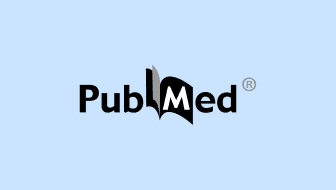Small and Simple
SdAbs are 10x smaller and simpler than conventional antibodies, allowing better tissue penetration and target access, with reduced immunogenicity and faster clearance for safer therapies.
Our company
We are developing cutting-edge biological treatments combining our unique Single-domain Antibodies (SdAbs)-platform with the most convenient formulation.
Our Technology
Unlock the future of targeted therapies with our innovative Single-domain Antibodies* technology. By leveraging deep immune system knowledge, our platform focuses on safer, simpler, and more successful solutions.
*Single-domain Antibodies (SdAbs) are the smallest antibody fragments with the specificity of an antibody. Their size allows for better tissue penetration and effectiveness in targeted therapies.
SdAbs are 10x smaller and simpler than conventional antibodies, allowing better tissue penetration and target access, with reduced immunogenicity and faster clearance for safer therapies.
SdAbs’ simplicity ensures greater stability and resistance to degradation, enabling consistent performance across delivery systems and minimizing the risk of adverse reactions for safer therapies.
SdAbs’ versatility allows for easy modification, fusion with other molecules, and optimized binding, enhancing potency, specificity, and safety in therapeutic applications.
Due to their simplicity and stability, SdAbs can be produced in large quantities at low cost, enabling scalable, high-yield production across various expression systems.
SdAbs are 10x smaller and simpler than conventional antibodies, allowing better tissue penetration and target access, with reduced immunogenicity and faster clearance for safer therapies.
SdAbs’ simplicity ensures greater stability and resistance to degradation, enabling consistent performance across delivery systems and minimizing the risk of adverse reactions for safer therapies.
SdAbs’ versatility allows for easy modification, fusion with other molecules, and optimized binding, enhancing potency, specificity, and safety in therapeutic applications.
Due to their simplicity and stability, SdAbs can be produced in large quantities at low cost, enabling scalable, high-yield production across various expression systems.
SdAbs are 10x smaller and simpler than conventional antibodies, allowing better tissue penetration and target access, with reduced immunogenicity and faster clearance for safer therapies.
SdAbs’ simplicity ensures greater stability and resistance to degradation, enabling consistent performance across delivery systems and minimizing the risk of adverse reactions for safer therapies.
SdAbs’ versatility allows for easy modification, fusion with other molecules, and optimized binding, enhancing potency, specificity, and safety in therapeutic applications.
Due to their simplicity and stability, SdAbs can be produced in large quantities at low cost, enabling scalable, high-yield production across various expression systems.
SdAbs are 10x smaller and simpler than conventional antibodies, allowing better tissue penetration and target access, with reduced immunogenicity and faster clearance for safer therapies.
SdAbs’ simplicity ensures greater stability and resistance to degradation, enabling consistent performance across delivery systems and minimizing the risk of adverse reactions for safer therapies.
SdAbs’ versatility allows for easy modification, fusion with other molecules, and optimized binding, enhancing potency, specificity, and safety in therapeutic applications.
Due to their simplicity and stability, SdAbs can be produced in large quantities at low cost, enabling scalable, high-yield production across various expression systems.
SdAbs are 10x smaller and simpler than conventional antibodies, allowing better tissue penetration and target access, with reduced immunogenicity and faster clearance for safer therapies.
SdAbs’ simplicity ensures greater stability and resistance to degradation, enabling consistent performance across delivery systems and minimizing the risk of adverse reactions for safer therapies.
SdAbs’ versatility allows for easy modification, fusion with other molecules, and optimized binding, enhancing potency, specificity, and safety in therapeutic applications.
Due to their simplicity and stability, SdAbs can be produced in large quantities at low cost, enabling scalable, high-yield production across various expression systems.



Why We’re Different
Our team's expertise with nanobodies enhances their applications, maximizing their value and synergizing with other technologies. Discover how our unique approach sets us apart.
Our Progress
Phase
Target Validation
Discovery
Lead Candidate Selection
Pre-clinical Studies
Phase I
Phase
Target Validation
Discovery
Lead Candidate Selection
Pre-clinical Studies
Phase I
Phase
Target Validation
Discovery
Lead Candidate Selection
Pre-clinical Studies
Phase I
Phase
Target Validation
Discovery
Lead Candidate Selection
Pre-clinical Studies
Phase I
Phase
Target Validation
Discovery
Lead Candidate Selection
Pre-clinical Studies
Phase I
Phase
Target Validation
Discovery
Lead Candidate Selection
Pre-clinical Studies
Phase I
Phase
Target Validation
Discovery
Lead Candidate Selection
Pre-clinical Studies
Phase I
Phase
Target Validation
Discovery
Lead Candidate Selection
Pre-clinical Studies
Phase I
Phase
Target Validation
Discovery
Lead Candidate Selection
Pre-clinical Studies
Phase I
Phase
Target Validation
Discovery
Lead Candidate Selection
Pre-clinical Studies
Phase I
Phase
Target Validation
Discovery
Lead Candidate Selection
Pre-clinical Studies
Phase I
Phase
Target Validation
Discovery
Lead Candidate Selection
Pre-clinical Studies
Phase I

Administration
Topical biologics for autoimmune diseases like psoriasis offer targeted treatment with reduced systemic side effects. Nanobodies can specifically address inflammatory cytokines, improving drug efficacy and patient adherence. This approach provides faster relief and enhances quality of life for patients.

Inhaled biologics for asthma deliver targeted treatment directly to the airways, enhancing efficacy and reducing systemic side effects. Monoclonal antibodies can specifically block inflammatory molecules, improving symptom relief and patient adherence. This method provides faster action and better quality of life.
Injectable biologics offer significant potential for chronic disease management by delivering therapeutic agents directly into the bloodstream. This targeted approach enhances symptom relief, slows disease progression, and improves patient function and quality of life.
Oral biologics for inflammatory bowel diseases provide targeted treatment directly to the gut, reducing inflammation and symptoms. This approach improves drug efficacy and patient adherence, offering a more convenient option that enhances quality of life.
Gene therapy for melanoma represents an innovative approach, using advanced techniques to modify patients' genetic material to target tumor cells or boost the immune response. This method offers highly specific treatment, reducing systemic side effects and improving efficacy, and provides new options for advanced or resistant cases.
Topical biologics for autoimmune diseases like psoriasis offer targeted treatment with reduced systemic side effects. Nanobodies can specifically address inflammatory cytokines, improving drug efficacy and patient adherence. This approach provides faster relief and enhances quality of life for patients.

Inhaled biologics for asthma deliver targeted treatment directly to the airways, enhancing efficacy and reducing systemic side effects. Monoclonal antibodies can specifically block inflammatory molecules, improving symptom relief and patient adherence. This method provides faster action and better quality of life.
Injectable biologics offer significant potential for chronic disease management by delivering therapeutic agents directly into the bloodstream. This targeted approach enhances symptom relief, slows disease progression, and improves patient function and quality of life.
Oral biologics for inflammatory bowel diseases provide targeted treatment directly to the gut, reducing inflammation and symptoms. This approach improves drug efficacy and patient adherence, offering a more convenient option that enhances quality of life.
Gene therapy for melanoma represents an innovative approach, using advanced techniques to modify patients' genetic material to target tumor cells or boost the immune response. This method offers highly specific treatment, reducing systemic side effects and improving efficacy, and provides new options for advanced or resistant cases.

Administration
Topical biologics for autoimmune diseases like psoriasis offer targeted treatment with reduced systemic side effects. Nanobodies can specifically address inflammatory cytokines, improving drug efficacy and patient adherence. This approach provides faster relief and enhances quality of life for patients.

Inhaled biologics for asthma deliver targeted treatment directly to the airways, enhancing efficacy and reducing systemic side effects. Monoclonal antibodies can specifically block inflammatory molecules, improving symptom relief and patient adherence. This method provides faster action and better quality of life.
Injectable biologics offer significant potential for chronic disease management by delivering therapeutic agents directly into the bloodstream. This targeted approach enhances symptom relief, slows disease progression, and improves patient function and quality of life.
Oral biologics for inflammatory bowel diseases provide targeted treatment directly to the gut, reducing inflammation and symptoms. This approach improves drug efficacy and patient adherence, offering a more convenient option that enhances quality of life.
Gene therapy for melanoma represents an innovative approach, using advanced techniques to modify patients' genetic material to target tumor cells or boost the immune response. This method offers highly specific treatment, reducing systemic side effects and improving efficacy, and provides new options for advanced or resistant cases.
Team & Advisory






Latest Updates

March 29, 2023
Local delivery of optimized nanobodies targeting the PD-1/PD-L1 axis with a self-amplifying RNA viral vector induces potent antitumor responses

March 29, 2023
Local delivery of optimized nanobodies targeting the PD-1/PD-L1 axis with a self-amplifying RNA viral vector induces potent antitumor responses

March 29, 2023
Local delivery of optimized nanobodies targeting the PD-1/PD-L1 axis with a self-amplifying RNA viral vector induces potent antitumor responses

Contact
Contact us to explore how we can collaborate to drive progress and achieve impactful results together.

Contact
Contact us to explore how we can collaborate to drive progress and achieve impactful results together.

Contact
Contact us to explore how we can collaborate to drive progress and achieve impactful results together.